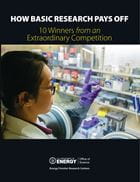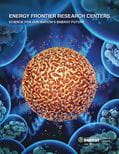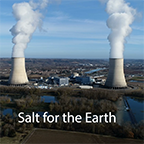Grand Challenges

The 2007 Basic Energy Sciences Advisory Committee (BESAC) report, Directing Matter and Energy: Five Challenges for Science and the Imagination was the culmination of a series of BES-sponsored workshops that began in 2001. Over and over, the recommendations from these workshops described similar themes that in this new era of science, we would design, discover, and synthesize new materials and molecular assemblies through atomic scale control; probe and control photon, phonon, electron, and ion interactions with matter; perform multi-scale modeling that bridges the multiple length and time scales; and use the collective efforts of condensed matter and materials physicists, chemists, biologists, molecular engineers, and those skilled in applied mathematics and computer science. The roadblocks to progress, and the opportunities for truly transformational new understanding were distilled into five inter-related grand challenges. Each Energy Frontier Research Center addresses one or more of these grand challenges.
Grand Challenge #1:
How do we control materials processes at the level of electrons?
Direct manipulation of the charge, spin, and dynamics of electrons to control and imitate the behavior of physical, chemical and biological systems, such as digital memory and logic using a single electron spin, the pathways of chemical reactions and the strength of chemical bonds, and efficient conversion of the Sun's energy into fuel through artificial photosynthesis.
Grand Challenge #2:
How do we design and perfect atom- and energy-efficient synthesis of revolutionary new forms of matter with tailored properties?
Create and manipulate natural and synthetic systems that will enable catalysts that are specific and produce no unwanted byproducts, or materials that operate at the theoretical limits of strength and fracture resistance, or that respond to their environments and repair themselves like
those in living systems.
Grand Challenge #3:
How do remarkable properties of matter emerge from complex correlations of the atomic or electronic constituents and how can we control these properties?
Orchestrate the behavior of billions of electrons and atoms to create new phenomena, like superconductivity at room temperature, or new states of matter, like quantum spin liquids, or new functionality combining contradictory properties like super-strong yet highly flexible polymers, or optically transparent yet highly conducting glasses, or membranes that separate CO2 from atmospheric gases yet maintain high throughput.
Grand Challenge #4:
How can we master energy and information on the nanoscale to create new technologies with capabilities rivaling those of living things?
Master energy and information on the nanoscale, leading to the development of new metabolic and self-replicating pathways in living and non-living systems, self-repairing artificial photosynthetic machinery, precision measurement tools as in molecular rulers, and defect-tolerant electronic circuits.
Grand Challenge #5:
How do we characterize and control matter away - especially very far away - from equilibrium?
Discover the general principles describing and controlling systems far from equilibrium, enabling efficient and robust biologically-inspired molecular machines, long-term storage of spent nuclear fuel through adaptive earth chemistry, and achieving environmental sustainability by understanding and utilizing the chemistry and fluid dynamics of the atmosphere.









